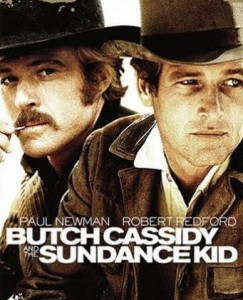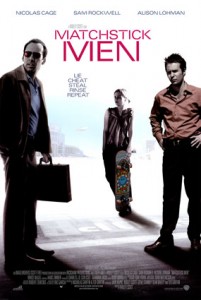 If we root against villains based on moral judgments, then how is it possible to root for heroes who are not just bad boys but down right criminal, e.g. hitmen, mobsters, thieves?
If we root against villains based on moral judgments, then how is it possible to root for heroes who are not just bad boys but down right criminal, e.g. hitmen, mobsters, thieves?
It’s a wonderful question that has a simple and revealing explanation. We root for these bad guys because they’re really good.
What?!
When talking about bad heroes, what we often do is:
1. Take them out of their context.
2. Focus on one or two negative traits, not the person as a whole.
3. Abstract them and miss what’s happening in real time as we process the story. We only have so much working memory and usually can only think about what’s being presented versus what we think about when we’re out of the story. What’s being presented in the story is mostly the threats to these heroes, not the consequences of their evil deeds. And if the consequences are show, it’s always modified by context (#1 and #2 above).
4. Confuse fascination with rooting.
When we actually look at what’s happening with the hero in the context of the story, what we find is that rooting is still based on moral judgments of who is good/right and who is not. We root for people we think are in the right (given their context) or are getting, undeservedly, the short end of the stick; we root against people who we think are in the wrong.
Here are some examples.
DISNEY’S ALADDIN
Thief. This one’s easy, I grant it. But it’s illustrative. I never once didn’t root for the boy. But I also never saw him as a true bad boy. He was nice. He shared the bread he stole with kids less fortunate. The guards were mean brutes. Jaffar was wicked and threatened the sultan and Jasmine who were good and innocent. was in a situation that provided some leeway for his behavior (alone, penniless).
1. Context. He’s fighting a much greater evil, someone we are rooting against.
2. Whole Person. He is a thief, but he’s also kind. Given his whole person, he falls on the side of good.
3. Processing. As we process the story we’re never shown awful consequnces of his theiving. Mostly just the good and courageous things he does. And the threats to his welfare.
THE ITALIAN JOB
Thieves.
1. Context. The movie starts with a heist and then a betrayal and murders by a traitor. Yes they’re theives, but we wittness a greater evil. The people they fight against are worse than they are.
2. Whole person. Except for the thieving, he’s a likeable guy.
3. Processing. We see few negative consequences of their actions to others, but we are constantly being presented with threats to them by guys who are committing greater crimes.
4. Fascination. I was incredibly interested in the scam–the plans, tech, everything.
THE PROFESSIONAL
Mob Hit Man
1. Context. He’s protecting a girl from other hit men. He’s fighting a bigger evil. He’s also taken advantage of by his boss.
2. Whole Person. He’s a hitman, but more time is spent on his kindness.
3. Processing. We see very little of the effect his hits have on others. Instead we are presented with threats to the girl and him.
DIRTY HARRY
Murdering vigilante
1. Context. He’s stopping guys who are doing terrible things.
3. Processing. We don’t focus on negative consequences of his vigilantism, but the threats from these really bad guys.
MATCHSTICK MEN
From IMDB “Roy’s private life, however, is not so successful. An obsessive-compulsive agoraphobe with no personal relationships to call his own, Roy is barely hanging on to his wits, and when his idiosyncrasies begin to threaten his criminal productivity he’s forced to seek the help of a psychoanalyst just to keep him in working order. While Roy is looking for a quick fix, his therapy begets more than he bargained for: the revelation that he has a teenage daughter–a child whose existence he suspected but never dared confirm. What’s more troubling, 14-year-old Angela wants to meet the father she never knew. At first, Angela’s appearance disrupts her neurotic father’s carefully ordered routine. Soon, however, with his own unique spin on parenthood, Roy begins to enjoy a relationship he never dreamed of having with his daughter.”
1. Context. Much of the time is spent his on his loneliness and issues with his estranged daughter.
2. Whole person. He steals, but we never see huge suffering from it. We see all the other issues he deals and have sympathy for him.
3. Processing. We’re focused on the threats to him, not the consequences of his one negative trait.
4. Fascination. I was fascinated by the scam and this pulled me along through the first.
CONCLUSION
What happened in all these stories as I experienced them was that the story carefully managed my view of the hero. He was always on the better side of the antagonists. He was always more good than bad, even if only by a little. And the story focused my attention most of the time on the bad/threats/consequences flowing from the antagonists, not the bad from the hero’s deeds.
What this shows is that you could write a story about a villain and make him the hero. In some instances it might be exceedingly difficult. For example, I think Hitler would be a hard sell as a hero, someone we’d root for. But the Neo-Nazis prove it’s not too hard a sell for some people.
I don’t think recognizing the fact that we can make “bad” people sympathetic means authors are “simply being clever” or “pushing buttons.” After all, to write well you must believe and care about what you’re writing about. YOU have to believe it. Nor do I think it undercuts the notion that we root for people based on a moral stance. It just recognizes the fact that moral judgments, in fact, the vast majority of appraisals of situations, happen quickly with the facts at hand, which are the ones in our working memories. The ones the authors are controlling.















